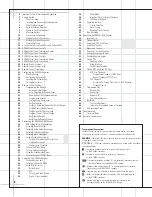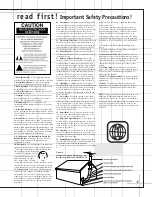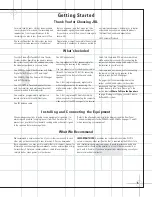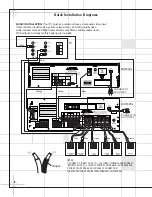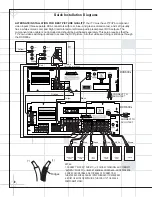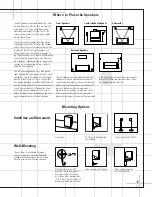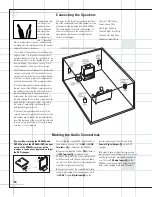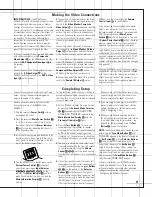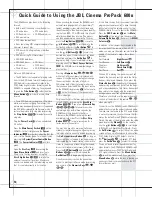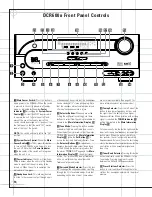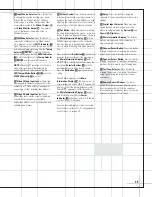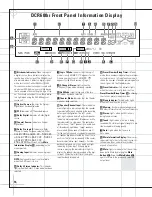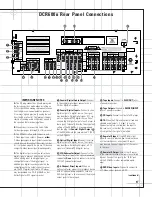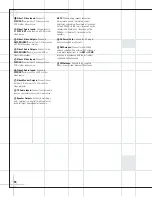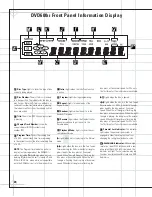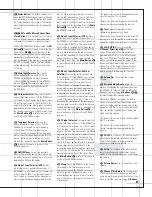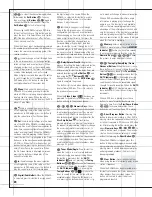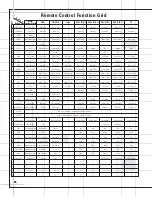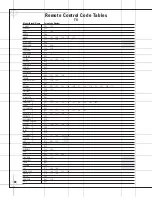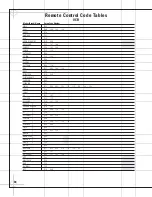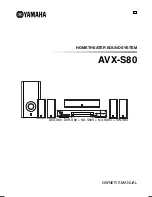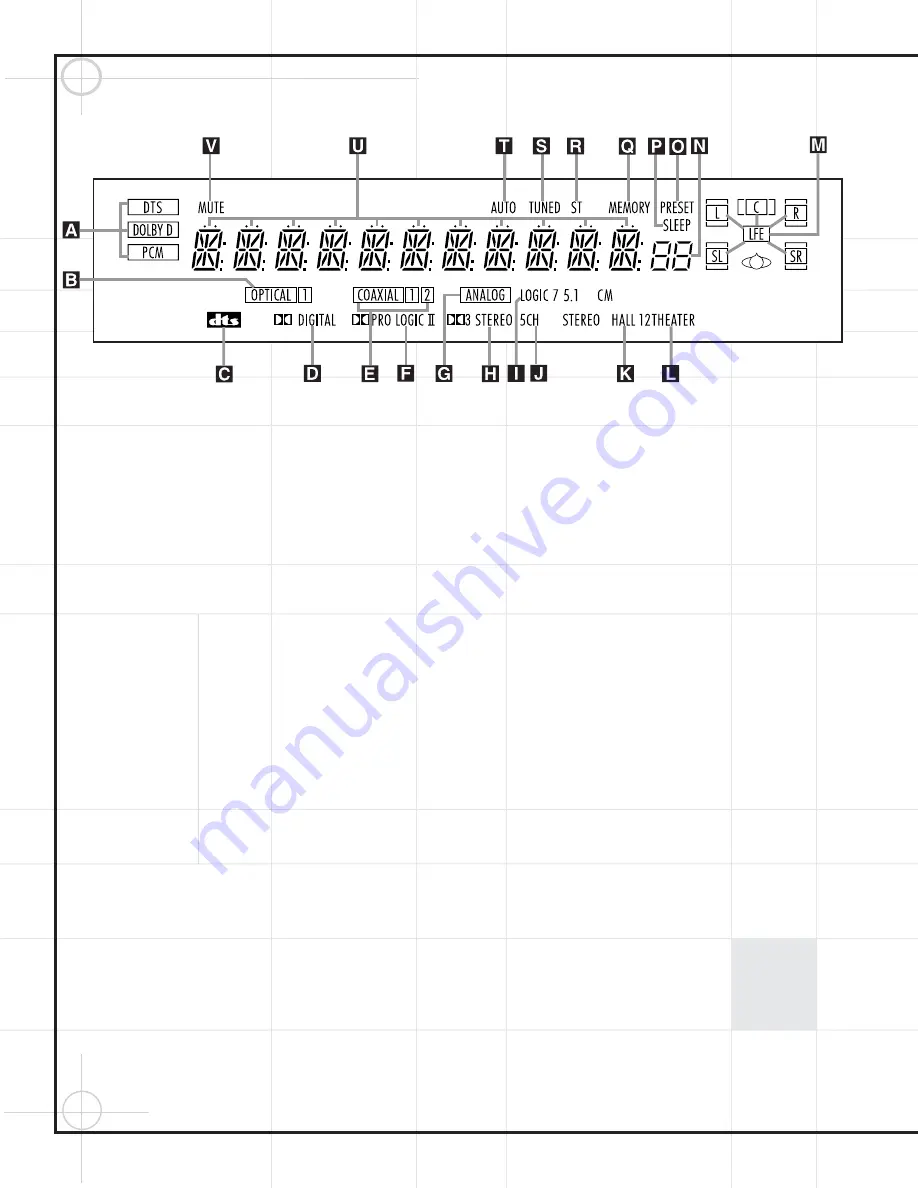
16
DCR600
II
Front Panel Information Display
A
Bitstream Indicators:
When the input is
a digital source, these indicators display the
specific type of data signal. The DCR600
II
will
also indicate when it detects a digital signal
with a resolution of either 96kHz or 192kHz.
This can occur when the receiver is used with
an external DVD-Audio player or other device
that is capable of transmitting this type of sig-
nal. You should not expect to see these indica-
tors light when using the DVD600
II
as your
source unit.
B
Optical Source:
Indicates the Optical
Digital Input has been selected.
C
DTS:
Indicates a DTS-encoded source.
D
Dolby Digital:
Indicates a Dolby Digital
source.
E
Coaxial Source:
Indicates a Coaxial
Digital Input.
F
Dolby Pro Logic II:
Indicates a Dolby
Pro Logic II mode has been selected. Either
DOLBY PRO LOGIC II
–
MOVIES
or
DOLBY PRO LOGIC II
–
MUSIC
or
DOLBY PRO LOGIC II
–
EMULATION
will scroll on the
Main
Information Display
U
, depending on the
mode selected.
G
Analog Input:
Indicates an analog input
source.
NOTE:
Analog audio input is not available
when the DVD input is in use.
H
Dolby 3 Stereo Indicator:
This indicator
lights when the Dolby 3 Stereo mode has been
selected.
I
Logic 7 Mode:
Indicates that the Logic 7
mode is in use.
LOGIC 7C
appears for the
Cinema version of Logic 7;
LOGIC 7M
appears for the Music version of Logic 7.
J
5-Channel Stereo:
Lights when the
5-Channel Stereo mode has been selected.
K
Hall Mode:
Lights when one of the two
Hall modes has been selected.
L
Theater Mode:
Indicates that the Theater
mode has been selected.
M
Speaker/Channel Input:
These indicators
are multipurpose, indicating either the speaker
type selected for each channel or the incoming
data-signal configuration. The left, center,
right, right surround and left surround speaker
indicators are composed of three boxes, while
the subwoofer is a single box. The center box
lights when a “Small” speaker is selected, and
all three boxes light when “Large” speakers
are selected. When none of the boxes are lit
for the center, surround or subwoofer channels,
no speaker has been selected for one of those
positions. The letters inside each of the center
boxes display active input channels. For stan-
dard analog inputs, only the L and R will light,
indicating a stereo input. When a digital
source is playing, the indicators will light to
display the channels being received at the digi-
tal input. When the letters flash, the digital
input has been interrupted.
N
Preset Number/Sleep Timer:
In Tuner
mode, these numbers indicate the preset mem-
ory location in use. In Sleep function mode, it
shows the number of minutes remaining before
the unit goes into the Standby mode.
O
Preset Indicator:
This indicator lights
when the tuner is in use to show that the
Preset Number/Sleep Timer
N
is showing
the station’s preset memory number.
P
Sleep Indicator:
This indicator lights
when the Sleep function is in use.
Q
Memory:
Flashes when entering presets
and other information into the tuner’s memory.
R
Stereo:
Lights when an FM station is
being tuned in stereo.
S
Tuned:
Lights when a station is being
received with sufficient signal strength to pro-
vide acceptable listening quality.
T
Auto:
Lights when the tuner is in
Auto mode.
U
Main Information Display:
Shows mes-
sages relating to the status, input source, sur-
round mode, tuner, volume level or other
aspects of operation.
V
Mute:
Lights to indicate that the unit has
been put in Mute by pressing the
Mute
Button
c
. Press the
Mute Button
c
again to return to the previously selected
output level.
96KHz 192KHz

